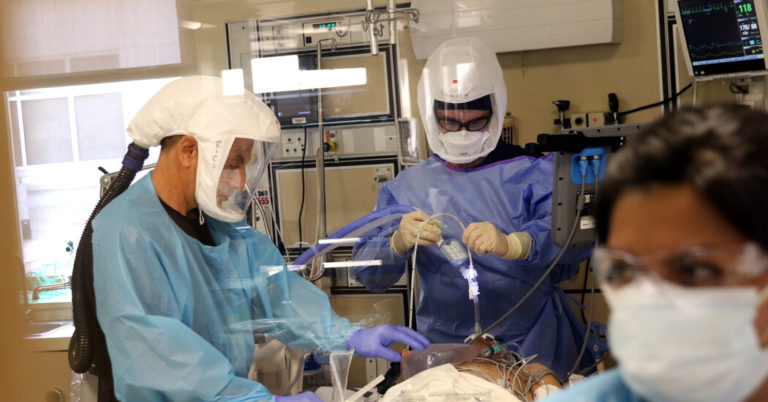

A highly infectious variant of the coronavirus that was first identified in Britain has now become the most common source of new infections in the United States, the director of the Centers for Disease Control and Prevention said Wednesday — a worrisome development that comes as officials and scientists warn of a possible fourth virus surge.
Federal health officials said in January that the B.1.1.7 variant, which began surging in Britain in December and has since slammed Europe, could become the dominant source of coronavirus infections in the United States, leading to a wrenching increase in cases and deaths.
While new cases, hospitalizations and deaths have declined from their peaks in January, new infections have increased after plateauing. The average number of new cases has reached nearly 65,000 a day, as of Tuesday, concentrated mostly in metro areas in Michigan as well as the New York City region. That’s up 19 percent from the figure two weeks ago.
The C.D.C. director, Dr. Rochelle Walensky, who last week warned that she felt a recurring sense of “impending doom,” said on Wednesday that 52 of the agency’s 64 jurisdictions — which include states, some major cities and territories — are now reporting cases of “variants of concern,” including B.1.1.7.
Federal health officials are tracking reports of increasing cases associated with day care centers and youth sports, and hospitals are seeing more patients who are younger adults — people in their 30s and 40s who are admitted with “severe disease,” Dr. Walensky said. Health officials are watching worrisome outbreaks in states including Michigan, Minnesota and Illinois.
At the same time, the nation is now vaccinating an average of about three million people a day, and states have been rushing to make all adults eligible. The C.D.C. reported on Wednesday that about 110 million people have received at least one dose of a Covid-19 vaccine, including about 64 million people who have been fully vaccinated. New Mexico, South Dakota, Rhode Island and Alaska are leading the states, with around 25 percent of their total populations now fully vaccinated.
“These trends are pointing to two clear truths,” Dr. Walensky said. “One, the virus still has hold on us, infecting people and putting them in harm’s way, and we need to remain vigilant. And two, we need to continue to accelerate our vaccination efforts and to take the individual responsibility to get vaccinated when we can.”
In February, a study that analyzed half a million coronavirus tests and hundreds of genomes predicted that the B.1.1.7 variant could become predominant in the United States.
“We knew this was going to happen, this variant is a lot more transmissible, much more infectious than the parent strain and that obviously has implications,” said Dr. Carlos del Rio, a professor of medicine and an infectious disease expert at Emory University. In addition to spreading more efficiently, he said, the B.1.1.7 strain appears to cause more severe disease, “so that gives you a double whammy.”
Eileen Sullivan contributed reporting.